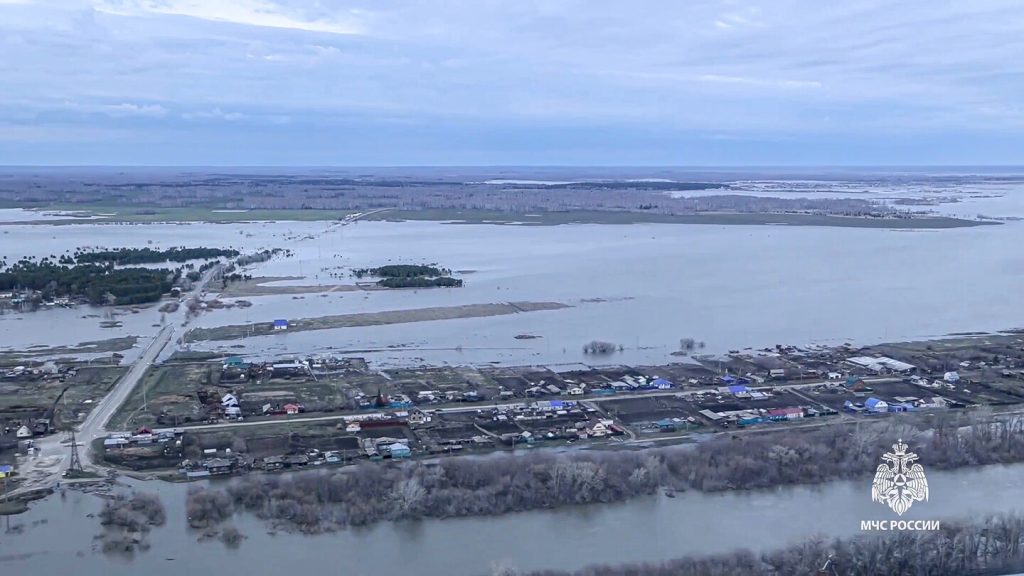The flooding in the Orenburg region of Russia has resulted in over 14,500 homes being submerged as a dam on the Ural River burst under the pressure of surging waters. The fluctuating water levels in different parts of the region have made the situation unpredictable and challenging. Experts have attributed the flooding to various factors such as melting snow reserves, frozen soil unable to absorb rainwater, and a significant release of water from the Iriklinksy reservoir. The local authorities have declared the flooding as a federal emergency, leading to the evacuation of over 16,500 residents from the affected areas.
In the city of Orenburg, the capital of the region, around 5,500 houses continue to be flooded even as water levels in the Ural River gradually decrease. However, the situation is more severe in the southwest near the Kazakh border, particularly in the town of Ilek where the river has reached dangerous levels. Further east along the border, regions like Kurgan and Tyumen have also been affected by rising water levels in local rivers, leading to the flooding of over 300 homes in the Kurgan region. Emergency evacuations are ongoing in these areas to ensure the safety of residents.
The impact of the flooding has not been limited to Russia alone, as neighboring Kazakhstan has also experienced significant floods. Over 113,000 people have been evacuated in Kazakhstan, with more than 5,700 houses remaining flooded as of the latest reports. The situation in Kazakhstan adds to the humanitarian crisis in the region, highlighting the widespread devastation caused by the overflowing rivers. Emergency officials in both countries are working tirelessly to manage the crisis and provide assistance to those affected by the floods.
The coordination between Russian and Kazakh authorities is crucial in addressing the crisis and ensuring the safety of residents in the affected regions. The scale of the flooding and the number of homes submerged underscore the urgent need for swift and effective response measures. As the water levels continue to fluctuate and more areas face the threat of flooding, it is imperative for both governments to work together to minimize the impact on the local population and provide necessary support to those affected by the natural disaster.
The floods in the Orenburg region serve as a stark reminder of the vulnerability of communities to natural disasters and the importance of preparedness and mitigation efforts. Climate change and extreme weather events are likely to increase the frequency and severity of such disasters, necessitating proactive measures to protect lives and property. The current situation calls for enhanced cooperation between governments, emergency response agencies, and humanitarian organizations to ensure a comprehensive and efficient response to the crisis. The resilience and solidarity of the affected communities will be tested in the coming days as they work towards recovery and rebuilding in the aftermath of the devastating floods.


